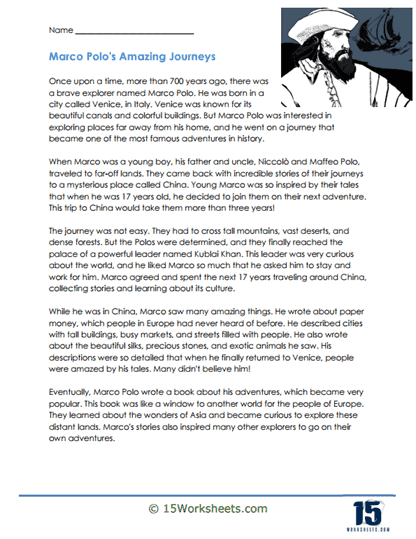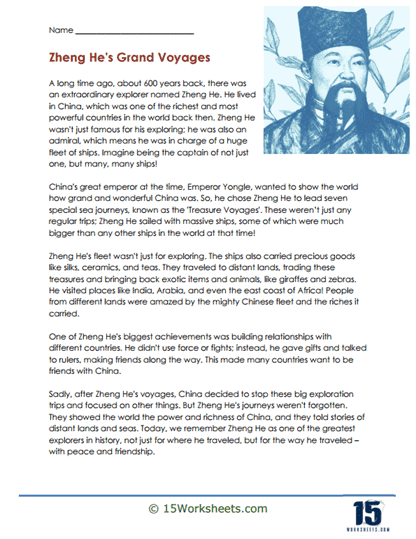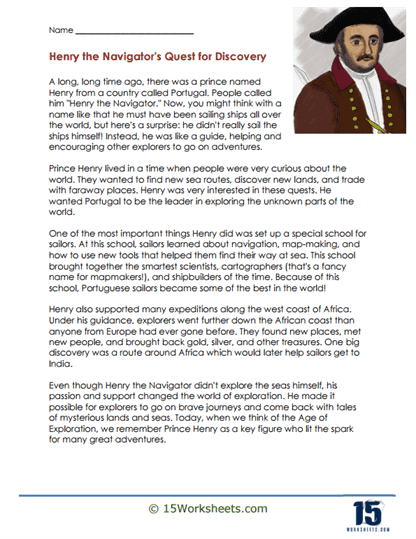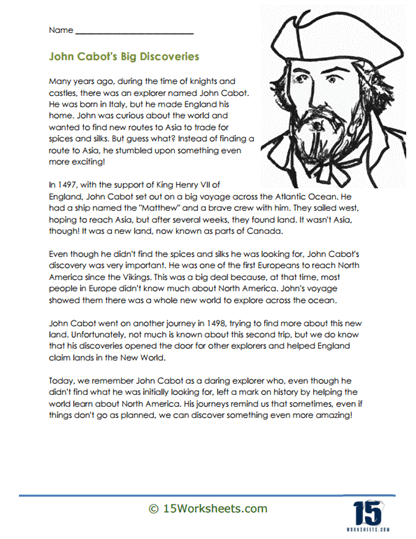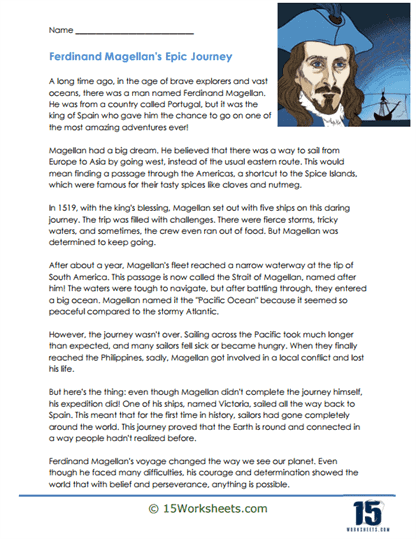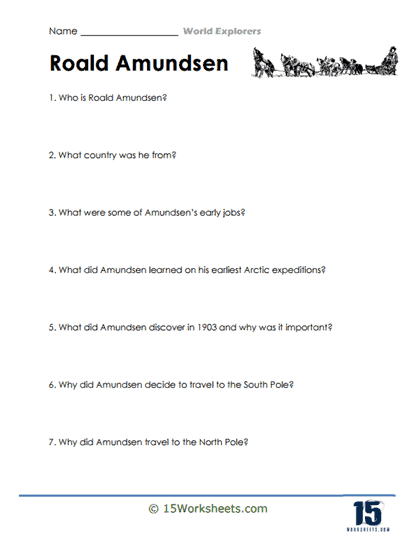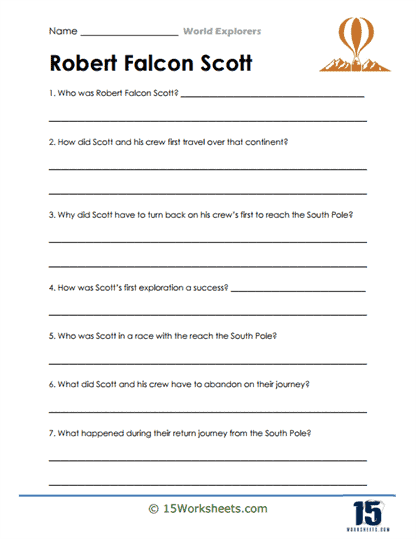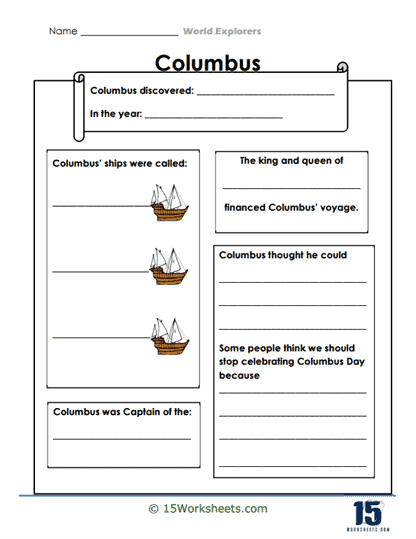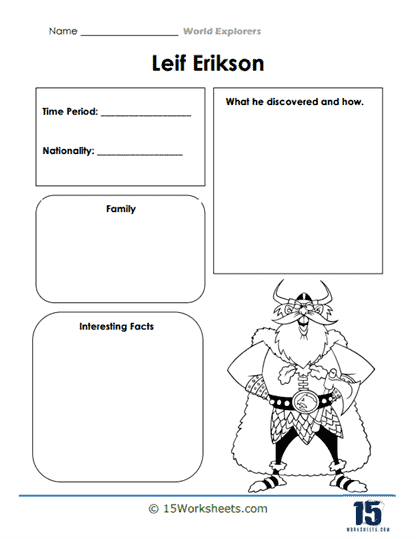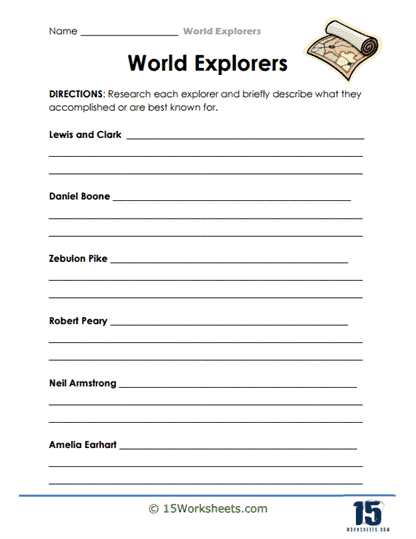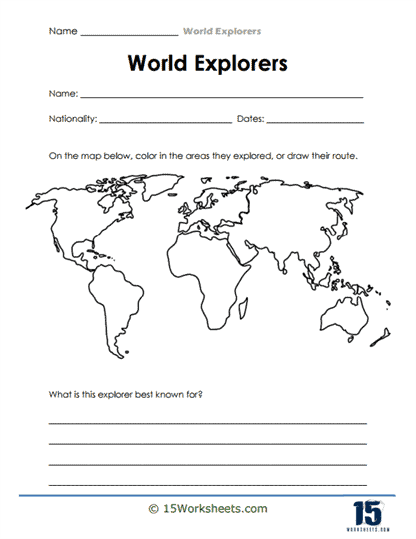World Explorers Worksheets
About These 15 Worksheets
These worksheets cover a wide range of topics, from the famous voyages of Christopher Columbus to the intrepid journeys of Ibn Battuta, presenting a multifaceted view of exploration across ages and cultures. These worksheets enable students to understand the motivations, challenges, discoveries, and impacts associated with each explorer’s journey.
Throughout history, brave individuals have ventured beyond known boundaries, driven by curiosity, ambition, or the promise of wealth and fame. These explorers have charted new territories, encountered diverse civilizations, and expanded our understanding of the world. Their tales are not just of personal achievement but also of cultural exchange, technological advancement, and, at times, conquest and conflict.
Types of Exercises On The Worksheets
Explorer Profiles – Basic exercises might ask students to match explorers with their significant achievements, routes, or discoveries. For example, linking Vasco da Gama with his sea route to India. Using maps, students might trace the journeys of various explorers, marking their starting points, destinations, and significant stops or discoveries along the way.
Timeline Activities – Students could arrange various exploratory events or journeys chronologically, offering insights into the progression of world exploration. These test foundational knowledge about individual explorers, their motivations, challenges faced, or their broader historical context.
Primary Source Analysis – Delving into diary entries, ship logs, or firsthand accounts, students can glean insights into the explorers’ experiences, challenges, and perceptions. Students might compare and contrast the goals, routes, or impacts of different explorers, shedding light on varied motivations and outcomes.
Role-playing and Simulations – Engaging in re-enactments, students might simulate the challenges faced during exploratory voyages, the negotiations with indigenous populations, or the thrill of new discoveries. Students could examine artwork, maps, or artifacts from exploratory eras, discussing their significance, historical context, or what they reveal about contemporaneous perceptions of exploration.
The Value of These Worksheets For Students
Through the tales of explorers, students journey vicariously across time and space, gaining insights into diverse lands, cultures, and historical contexts. Many exploratory journeys led to significant cultural exchanges, be it in terms of cuisine, technology, art, or ideas. By studying these, students appreciate the interconnectedness of human civilizations.
Not all exploration had benign outcomes. By examining the consequences, students critically analyze the darker aspects, such as colonization, exploitation, or cultural erasure. Explorers often faced insurmountable odds, and their stories of perseverance, innovation, and resilience can inspire students in their personal challenges.
While the age of maritime exploration might seem distant, exploration continues, be it in space, the deep sea, or scientific frontiers. Understanding past explorers can inspire future pioneers. Encountering stories of explorers’ interactions with indigenous populations fosters empathy and a nuanced understanding of cultural encounters.
In an increasingly globalized world, the tales of explorers connecting continents and cultures offer foundational insights into global interconnectedness and interdependence.
As students navigate these stories, they not only traverse the globe and its rich history but also embark on personal journeys of understanding, reflection, and inspiration. Learning about world explorers equips them with a more comprehensive, empathetic, and critical view of the world, its history, and its endless possibilities.

